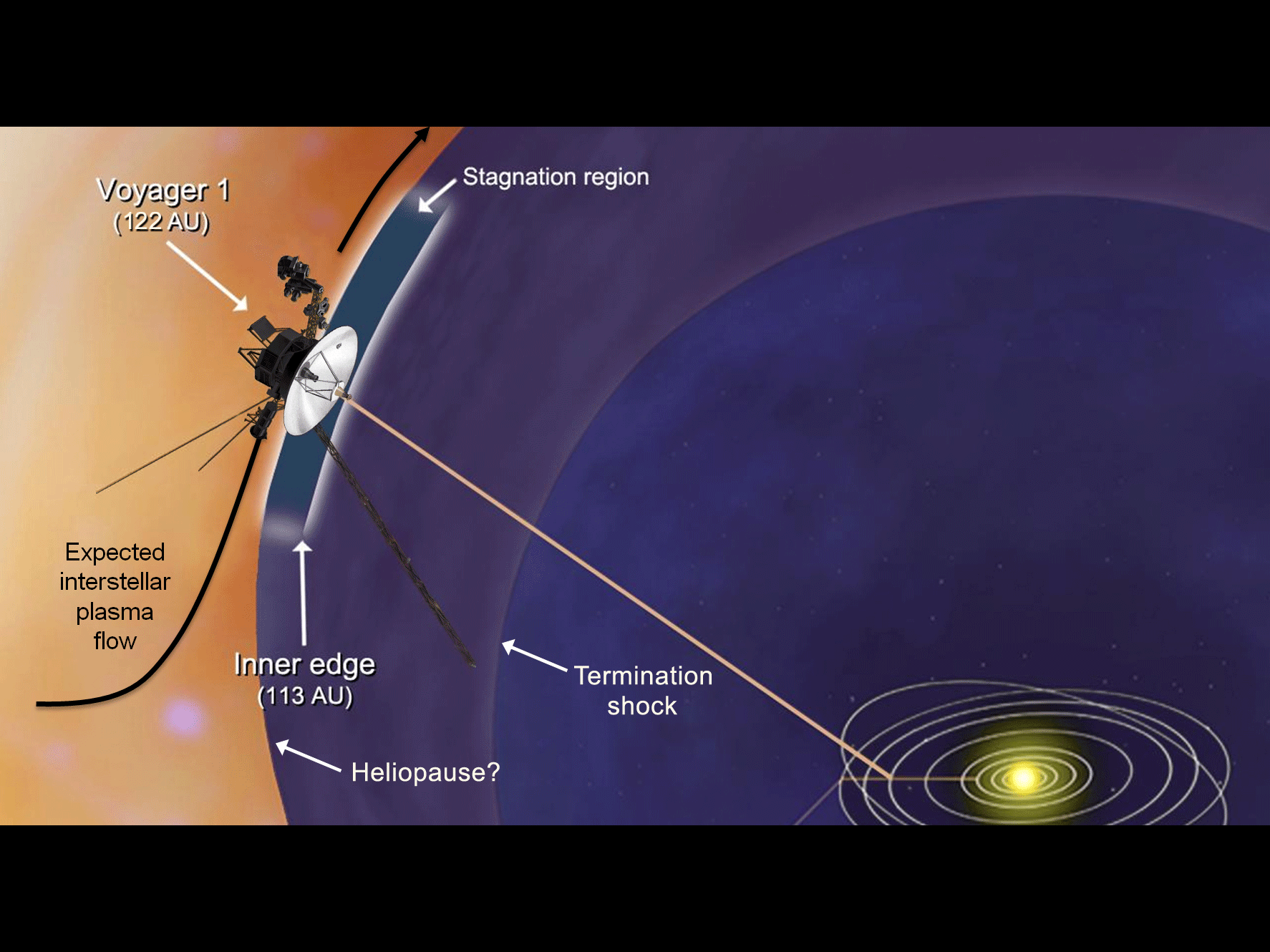Press Release
NASA’S Voyager 1 Cruising on a ‘Magnetic Highway’
Johns Hopkins APL Scientists See Charged Particles Taking ‘Exit Ramp’ to Interstellar Space
NASA’s Voyager 1 spacecraft has encountered a new region on the outskirts of our solar system that appears to be a magnetic highway for charged particles. Scientists believe this is the final region Voyager has to cross before reaching interstellar space, or the space between stars.
Scientists call this region the magnetic highway because our sun’s magnetic field lines are connected to interstellar magnetic field lines. The connection has allowed lower-energy charged particles that originate from inside our heliosphere — the bubble of charged particles the sun blows around itself — to zoom out, and higher-energy particles from outside to stream in.
Before entering this region, the charged particles bounced around in all directions, as if trapped on local roads inside the heliosphere. Thinking the particles might be colliding against the gaseous boundary of the solar system, scientists operating Voyager’s low-energy charged particle detector wondered if the spacecraft had reached the last stop before — or even crossed into — interstellar space. Data indicating that the direction of the magnetic field lines has not changed, however, lead the Voyager team to infer that this region is still inside the solar bubble.
The new results will be described today at the American Geophysical Union meeting in San Francisco.
“If we were judging by the charged-particle data alone, I would have thought we were outside the heliosphere,” says Stamatios Krimigis, principal investigator of the Low-Energy Charged Particle (LECP) instrument, based at the Johns Hopkins University Applied Physics Laboratory in Laurel, Md. “In fact, our instrument has seen the low-energy particles taking the exit ramp toward interstellar space. But we need to look at what all the instruments are telling us, and only time will tell whether our interpretations about this frontier are correct. One thing is certain — none of the theoretical models predicted any of Voyager’s observations over the past 10 years, so there is no guidance on what to expect.”
Since December 2004, when Voyager 1 crossed a shockwave known as the Termination Shock, the spacecraft has been exploring the heliosphere’s outer layer, called the heliosheath. Here, the stream of charged particles from the sun — known as the solar wind — abruptly slowed down from supersonic speeds and became turbulent. Voyager 1’s environment was consistent for about five and a half years, but then the spacecraft detected that the outward speed of the solar wind slowed to zero. The intensity of the magnetic field also began to increase.
“;The solar wind measurements speak to the unique abilities of the LECP detector, designed at APL nearly four decades ago,” Krimigis says. “Where a device with no moving parts would have been safer — lessening the chance a part would break in space — our team took the risk to include a stepper motor that rotates the instrument 45 degrees every 192 seconds, allowing it to gather data in all directions and pick up something as dynamic as the solar wind. A device designed to work for 500,000 ‘steps’ and four years has been working for 35 years and well past 6 million steps.”
In fact, for the past several months, the entire Voyager spacecraft was commanded to rotate periodically by 70 degrees so the LECP instrument could measure the solar wind flow in the up-down direction, or north-south according to the ecliptic plane on which the planets orbit the sun. In theory, with the flow in the ecliptic plane having dropped to zero, the plasma should have been headed north at Voyager’s position. But the measurements, reported Sept. 6 in the journal Nature, showed that the flow was consistent with zero. “This was a real surprise,” says LECP co-investigator Rob Decker, of the Applied Physics Laboratory (APL), “because most models were expecting the northward speed to be at least as high as 25 kilometers per second.”

